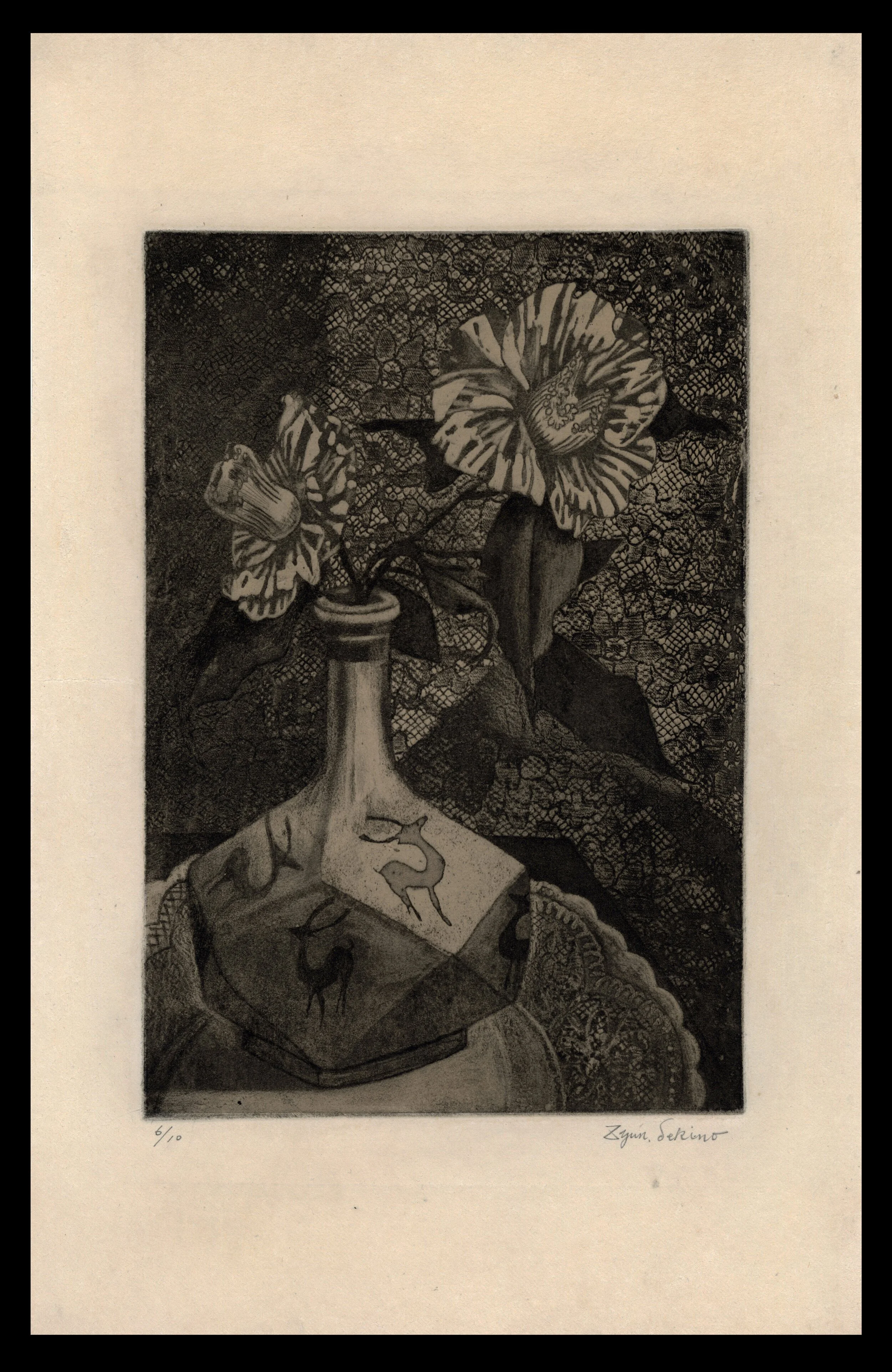<b>STILL LIFE ETCHING </b> / Junichiro Sekinoc. 1951$3,500</em>
ARTIST: Junichiro Sekino (1914-1988)
TITLE: Still Life
MEDIUM: Etching, aquatint on paper
DATE: c.1951
DIMENSIONS: 17 3/7 x 10 7/8 inches
CONDITION: Excellent; no problems to note
NOTE: Early self-printed work
LITERATURE: Martin, Elias, Behind Paper Walls: Early Works and Portraits by Jun’ichiro Sekino
MEDIA: This design was discussed on Woodblock Wednesday, Episode 50
$3,500.00
ARTIST: Junichiro Sekino (1914-1988)
TITLE: Still Life
MEDIUM: Etching, aquatint on paper
DATE: c.1951
DIMENSIONS: 17 3/7 x 10 7/8 inches
CONDITION: Excellent; no problems to note
NOTE: Early self-printed work
LITERATURE: Martin, Elias, Behind Paper Walls: Early Works and Portraits by Jun’ichiro Sekino
MEDIA: This design was discussed on Woodblock Wednesday, Episode 50
$3,500.00
ARTIST: Junichiro Sekino (1914-1988)
TITLE: Still Life
MEDIUM: Etching, aquatint on paper
DATE: c.1951
DIMENSIONS: 17 3/7 x 10 7/8 inches
CONDITION: Excellent; no problems to note
NOTE: Early self-printed work
LITERATURE: Martin, Elias, Behind Paper Walls: Early Works and Portraits by Jun’ichiro Sekino
MEDIA: This design was discussed on Woodblock Wednesday, Episode 50
$3,500.00
Details
In 1951, Sekino established an etching school out of his home. It was loosely molded after the Onchi-lead Ichimoku-kai. In this school, Sekino both ushered new artists into this foreign medium and provided a safe space for established artists to express themselves and obtain inspiration. Though it started as a school, it was said that no one wished to graduate, and the modest fees collected were used to purchase alcoholic spirits. Japan’s top print artists who had an interest in etching attended the gatherings, such as Yozo Hamagichi, Tetsu Komai, Kazuma Oda, and Takeo Takei. During this time, Sekino turned a great deal of his own artistic attention toward etching and producing a sizable body of new work.
This design was one of the works the artist produced during this period. The etching showcases a technical mastery of the medium with an astonishing use of shadow and light, clearly exploiting the full capabilities of etching. The print also demonstrates Sekino’s keen ability to reproduce various textures, as the design highlights lace, ceramic, and organic subjects. The famed Dutch artist Rembrandt, and his ability to command the entire plane, was a huge source of inspiration for Sekino. We see this influence quite strongly in this Sekino etching as it clearly demonstrates ownership of the complete visual plane—no part of his etchings was left untouched.
Connoisseur's Note
This early etching by Sekino is exceedingly rare. The work was executed in an edition of 10; the print’s original paper label with the numeration is included. Although Sekino worked in etchings throughout his prolific career, the early etchings he produced in this period were all done in very limited edition runs. Early etchings by the artist are also highly sought-after due to their experimental quality and means of production. This work, a study of light and shadow, demonstrates maturity and confidence that was not often found in post-war printmakers at this time. This print is one of the rarest in the artist’s body of work and is also among his top designs.



